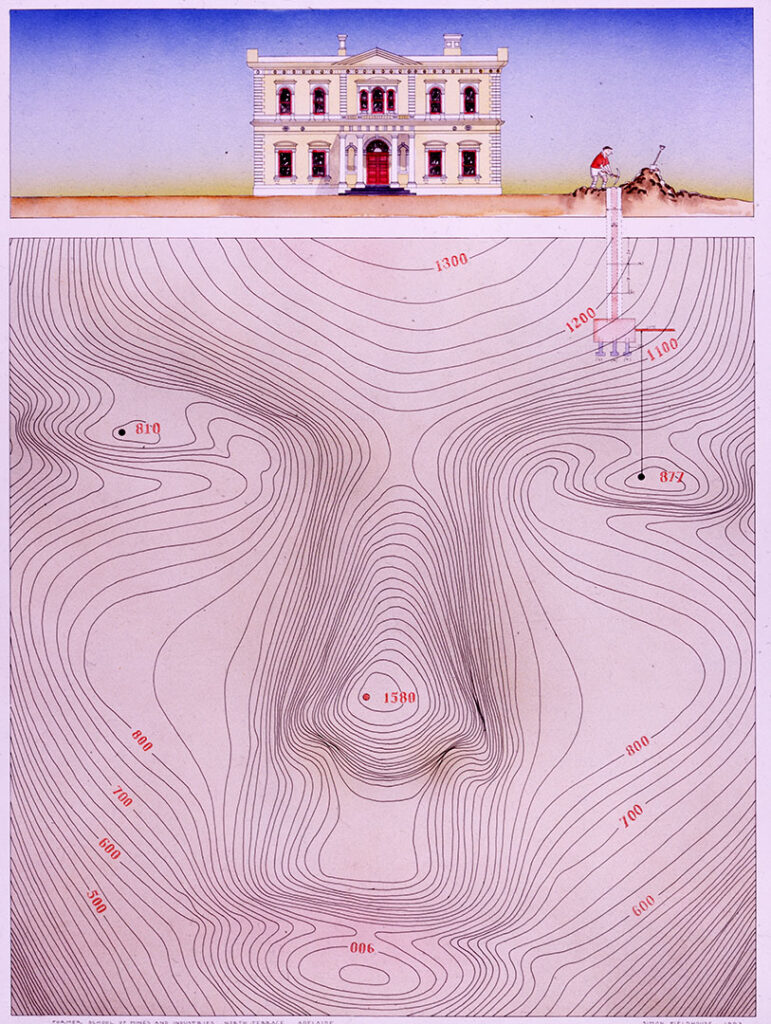
Former School of Mines and Industries North Terrace Adelaide
The Former School of Mines and Industries, located on North Terrace in Adelaide, Australia, is a historical institution that played a pivotal role in the development of the region's mining and industrial sectors. This iconic building, designed by the renowned architect E.J. Woods, is not only an architectural masterpiece but also a symbol of South Australia's rich history and technological advancement.
The history of the Former School of Mines and Industries dates back to its establishment in 1889, a time when South Australia was experiencing significant growth in its mining and industrial sectors. The institution was founded to provide education and training to individuals seeking careers in these burgeoning industries. Over the years, it evolved and expanded its curriculum to meet the changing needs of the region's economy.
One of the most notable aspects of this historic building is its stunning architectural design. E.J. Woods, a prominent South Australian architect, created a masterpiece that reflects the grandeur of the late 19th century. The building is a fine example of Victorian Free Classical architecture, with its distinctive façade featuring grand columns and ornate detailing. The building's grandeur reflects the optimism of the era, as South Australia was becoming a significant player in the global mining and industrial landscape.
The Former School of Mines and Industries played a crucial role in the development of skilled professionals who contributed to the growth of South Australia's mining and industrial sectors. The institution offered a wide range of courses, including metallurgy, chemistry, geology, engineering, and mechanics. Graduates from this institution went on to play vital roles in various industries, helping to drive innovation and economic growth.
In addition to its educational contributions, the building also served as a hub for the exchange of ideas and innovations. It hosted numerous conferences, exhibitions, and events related to mining and industry. The Former School of Mines and Industries was not just a place of learning but also a center of intellectual and technological exchange, making it a focal point for the advancement of South Australia's industrial landscape.
Today, the Former School of Mines and Industries stands as a historic landmark that continues to be a symbol of South Australia's rich industrial heritage. Although the institution no longer functions as a school, the building has been preserved and repurposed, serving as a reminder of the region's mining and industrial legacy. It has found new life as a cultural and heritage center, often hosting exhibitions and events that celebrate South Australia's history and technological achievements.
In conclusion, the Former School of Mines and Industries on North Terrace in Adelaide is not only an architectural gem but a symbol of South Australia's mining and industrial history. Its rich legacy in education and innovation continues to be celebrated, and the building stands as a testament to the region's progress and development in the late 19th and early 20th centuries. Its preservation and adaptation for modern uses ensure that future generations can appreciate and learn from the institution's historical significance.
The Former School of Mines and Industries on North Terrace in Adelaide is a compelling blend of Victorian Free Classical and Renaissance Revival styles, showcasing the grandeur and architectural sophistication of the late 19th century. Designed by E.J. Woods, a notable South Australian architect, the building is a masterpiece of its time.
One of the most striking features of the building is its imposing façade, which captures the essence of Victorian Free Classical architecture. The grand entrance is flanked by massive columns with intricate Corinthian capitals, which give the building an aura of strength and sophistication. The use of classical columns is a hallmark of this architectural style, evoking a sense of permanence and classical elegance.
The façade is adorned with numerous decorative elements, including friezes, cornices, and pediments, all meticulously crafted to enhance the building's visual appeal. The intricate detailing on the exterior reflects the craftsmanship and attention to detail that went into its construction. Such ornamentation was characteristic of the Victorian era, where architects aimed to make a statement with their buildings, celebrating the progress and prosperity of their time.
The Former School of Mines and Industries also exhibits elements of Renaissance Revival architecture, particularly in its symmetrical layout and the use of arched windows and doorways. This style draws inspiration from the architectural traditions of the Italian Renaissance, emphasizing balance and proportion. The arched windows on the building, for instance, are elegantly framed and contribute to the overall sense of grace and refinement.
The exterior of the building features a beautiful mix of materials, including limestone and brick. The combination of these materials adds depth and texture to the façade, further enhancing its aesthetic appeal. The choice of materials also reflects the practical considerations of the time, as limestone was readily available in the region and was a favored building material.
The Former School of Mines and Industries, with its architectural grandeur and historical significance, is a testament to the aspirations and achievements of South Australia during the late 19th century. Beyond its impressive exterior, the interior spaces are equally remarkable, featuring grand halls, ornate staircases, and well-lit classrooms that were designed to inspire and educate.
In summary, the architectural design of the Former School of Mines and Industries on North Terrace in Adelaide is a splendid representation of Victorian Free Classical and Renaissance Revival styles. Its imposing façade, replete with classical columns, decorative elements, and a symmetrical layout, exemplifies the architectural trends of its era. This historical landmark not only celebrates South Australia's mining and industrial heritage but also serves as an enduring testament to the architectural brilliance of E.J. Woods and the prosperity of the late 19th century.